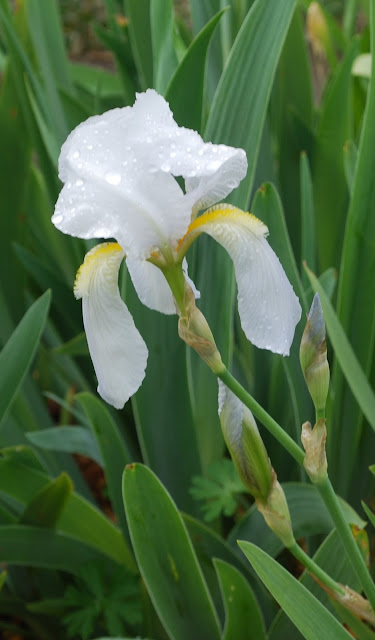 |
| Start raised bed by spreading black plastic and weighing down edges. |
I started these beds Jan 1, so they are about 3 1/2 months in the making. This method is minimal effort compared to rototilling a patch of fresh sod, and not nearly as obnoxious . I wanted some much larger garden beds, mainly to raise corn and sunflowers for chicken feed. There are also some other things to grow for the kitchen garden, overflow from the raised beds.
 |
| Three months or so later, uncover. |
The method is very straight-forward. Obtain medium grade black plastic from the grocery or hardware store. Spread over the planned garden bed. I bought sheets that were 10 by 20 feet, so that is the dimension of the garden beds.
Weigh down the ends and sides with bricks, stones, logs, or dead rabbits. Not serious about that last, and they don't keep long enough.
 |
| Till or turn over soil. |
Wait a few months. The exact timing is not rocket science. I figured 3 months would be plenty, but 2 months might have worked, or they could sit a couple more months.
When uncovered, all of the grass and weeds were dead. Oddly, there was green moss. I consider that about the same as peat moss and worked it into the soil.
We have a family of moles in our yard. There are annoying, and dig where I'd rather they don't. I accomodate to them by lining the bottom of raised beds with chicken wire, which keeps them out. For a while, I collected mole-hills in the wheelbarrow to use as the base soil in raised beds. Now I usually use a garden rake to smooth molehills and fill in low spots in the yard.
As it turned out, moles loved the black plastic. They tunnelled throughout the beds, such that all that remained was finely tilled soil and a few patches of moss. I started with a hand tiller, but it was easier to use a garden rake - type - hoe to break up the soil and smooth it. Very easy.
Note, I turned over another bed last month, and the soil was much tougher. There was no mole-assistance with that bed. These moles were my buddies. Moles are carnivores, so I imagine there are no bugs, slugs, or caterpillars in the bed. Didn't see any. No earthworms, either, but they will return.




















































